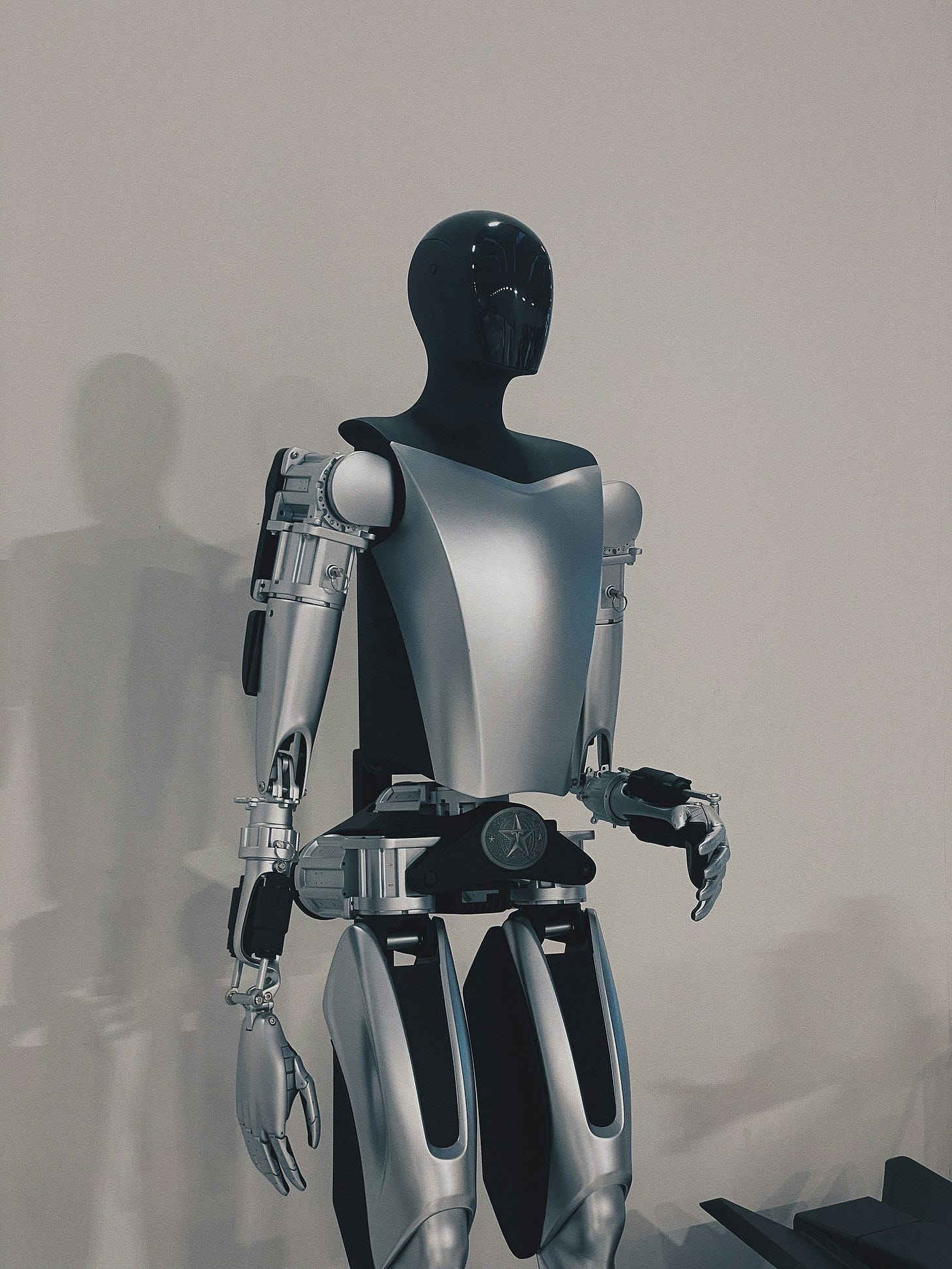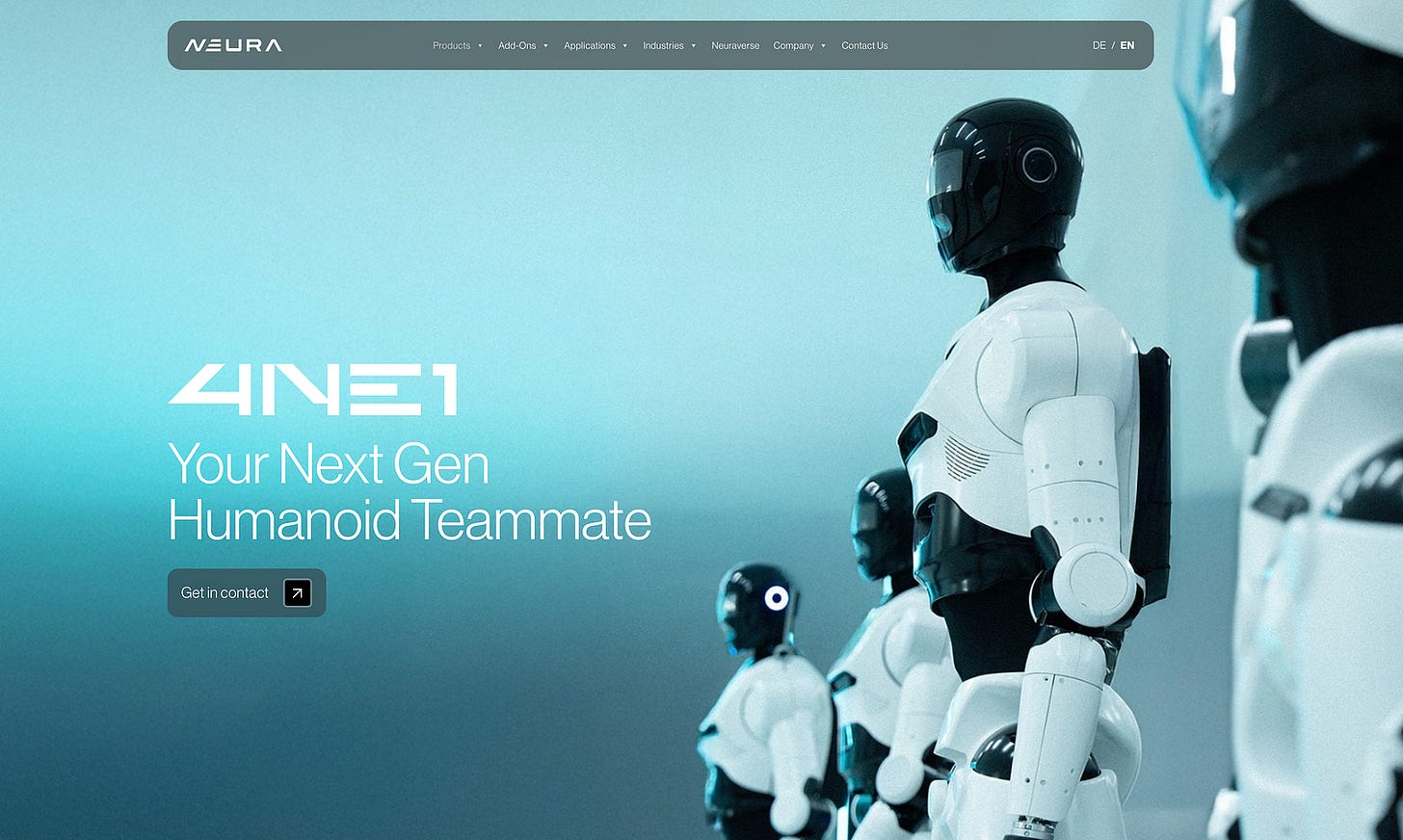Humanoid Robots Are 5 Years Away From Being Everywhere
And what that means
My Medium friends can read this story over there as well. Or free (with ads) here. If you want to support ad-free content, you can get my paid newsletter 50% off right now.
Humanoid robots accelerate at lightning speed, even faster than I thought.
The development curve went vertical. They are not science fiction anymore. They’re the next major tech revolution about to happen, and it could be as big as the Industrial Revolution.
Over the past year, progress in humanoid robotics has accelerated faster than almost anyone expected. Figure, Tesla, and Neura Robotics have turned them into functioning prototypes that can already perform basic and advanced human tasks. A China produces them at low costs.
If the current pace continues, humanoid robots will soon be part of everyday life.
Within the next 5 years.
How Robots Learn
Until recently, building humanoid robots was incredibly difficult.
Every movement had to be programmed manually, line by line, to handle every possible situation. It was slow, expensive, and far too rigid for the real world.
They basically fell down every step of the way.
Then AI entered the picture.
Instead of relying on pre-written code, robots can now learn by training in simulated environments. They can practice for thousands of hours in a digital space (learning how to walk, balance, and manipulate objects) all within minutes of real time.
Add to that the rapid advances in motor design, battery capacity, and computing power, and we suddenly have machines that move, perceive, and adapt in ways that were unthinkable just a few years ago.
The Latest Generations
The most recent example is the Figure 3, which looks and moves very human.
It can pick up fragile objects, recognize clutter, sort laundry, and carry trays or serve drinks. It’s designed to operate in a real-world environment, not controlled lab settings.
Tesla Optimus is following a similar path. The company claims it could produce up to a million units within the next few years. But Tesla claims a lot… and rarely accomplishes.
Nonetheless, the robot has made visible progress (walking smoothly, manipulating delicate items, and performing repetitive industrial tasks with precision).

In Germany, Neura Robotics has developed its own humanoid system, designed more for domestic and collaborative environments. Their robots integrate visual and auditory AI to recognize people, understand voice commands, and perform small physical tasks.

What unites these projects is intelligence.
It looks like a scene from iRobot.
These robots don’t need to be micromanaged, they can analyze, decide, and adapt on their own.
And that’s crazy technology… and quite a bit scary.
What This Means for Work
We all know the obvious implications:
Robots could take many, maaany jobs from humans, just like every major technological revolution did
Robots can make basic tasks at home, at work, and, most importantly, in factories, way faster and more automated
But there are other implications that are mentioned less often.
(This issue is behind paywall. You can sign up for my paid newsletter 50% off here if you enjoy my content & want more. Or read on Medium.)
Keep reading with a 7-day free trial
Subscribe to Letters by Burk to keep reading this post and get 7 days of free access to the full post archives.


